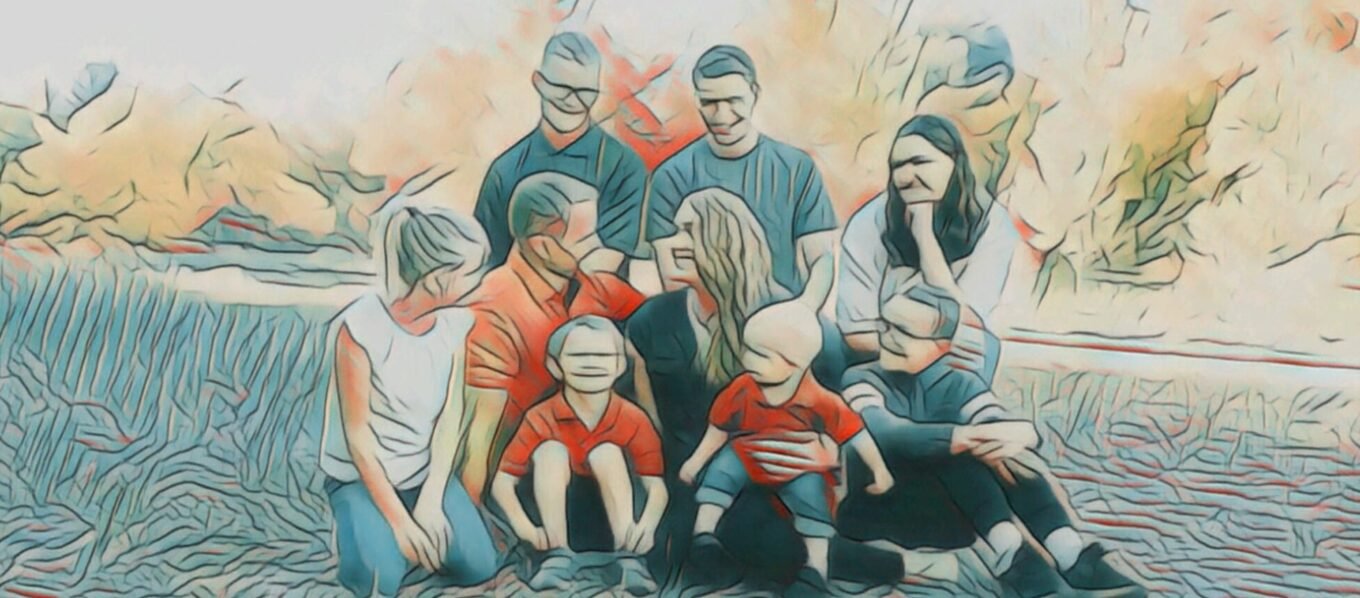The Stress of Being a Parent of a Large Family: Finding Clarity and Balance Through Journaling
Being a provider for a large family comes with both tremendous joy and significant challenges. As the head of a household with seven children, I understand the strain of juggling work commitments and family life. Often, it feels like the scales tip toward work, leaving little energy or time for the people who matter most—our families. The responsibility to provide is immense, and when that time away from home isn’t fulfilling or enjoyable, it can make it difficult to return to the chaos and demands of family life.
Balancing work and family life requires not just physical effort, but emotional and mental clarity. It’s easy to focus on what isn’t working—being overworked, feeling drained, or struggling to make time for family—but it’s much harder to identify and implement what we do want. Thankfully, there are ways to find that clarity, and journaling has been a game-changer for me in this process.
Discovering Balance Through Personality Insights
One of the first books that helped me begin understanding myself better was Do What You Are. This book helped me realize the importance of aligning my work and life with my true personality. I’ve always found self-reflection valuable, but it took this book for me to see how crucial it is to understand my strengths and weaknesses. As a provider, understanding my own personality helped me navigate my role more effectively, and ultimately, align both my professional and personal life to reflect my values.
I often struggle with expressing myself and truly understanding what I want. It’s easy to say what I don’t want—feeling stressed, disconnected, or overwhelmed—but understanding what I do want requires deeper reflection. Do What You Are encouraged me to take a closer look at my strengths and how they fit into both my career and my family life. By understanding my personality, I could adjust my mindset and approach to life, helping me find balance between work and family.
StrengthsFinder: Applying My Strengths to Find Balance
Another book that provided significant insight was StrengthsFinder by Tom Rath. This book helped me better understand my natural strengths and how to apply them in different areas of my life. Understanding these strengths has been vital in my journey to balance work and family life. By identifying the areas where I excel, I’ve been able to allocate my time and energy more effectively—both at work and at home.
Applying my strengths allowed me to focus on what I do best at work, without letting it spill over and dominate my time with family. For example, in my professional life, I can take on leadership roles with confidence, but at home, I focus on being present with my family. By creating this balance, I find that I can excel in both areas without feeling overwhelmed. I even had my older children take the StrengthsFinder quiz, helping them understand themselves better and fostering stronger connections in our family dynamic.
Designing Your Life: A Framework for Work-Life Balance
Another transformative book in my journey was Designing Your Life by Bill Burnett and Dave Evans. When I faced a recent job change, I felt immense pressure to figure everything out immediately. Joining a company with employees who had been there for years made me feel like I needed to have all the answers, but Designing Your Life helped me realize that it’s okay to not have it all figured out. Life, especially the balancing act of work and family, doesn’t need to follow a rigid plan.
The book encourages a mindset shift: life is about designing experiments, not finding the perfect solution right away. This approach allowed me to view my job change as an opportunity to test different methods and see what worked for both my career and family. Embracing flexibility and the unknown gave me the freedom to make decisions based on what was best for my family, rather than what I thought I was “supposed” to do.
Designing Your Life: A Framework for Making Big Decisions
One of the most impactful books I’ve read in recent years is Designing Your Life by Bill Burnett and Dave Evans. I was struggling with a recent job change, feeling overwhelmed by the pressure of needing to have all the answers right away. I joined a company where many employees had been there for years—some for as long as 6.3 years—and I felt like the new kid who was supposed to know it all. Designing Your Life helped me see that it’s okay to not have all the answers, and it’s okay to experiment with new directions.
This book emphasizes that life doesn’t have to be one straight path; it’s about designing a life that works for you. It’s a mindset shift that allows for trial, error, and growth. And when things don’t work out as expected, it’s okay to pivot. This idea helped me immensely, especially when I was feeling stuck in my new role. I learned to embrace the uncertainty and approach the situation with a sense of possibility instead of pressure.

Journaling for Clarity and Balance
A key strategy that has helped me in balancing work and family life is journaling. Writing things down—whether it’s reflections, goals, or tasks—has been invaluable in gaining clarity. One powerful technique from Designing Your Life involves tracking your “engagement and energy” score for each task. By rating how energized and engaged I feel during my work and personal activities, I can pinpoint what’s truly fulfilling and where I may need to make adjustments.
For instance, if I find that a work task is draining me or I feel disengaged at home during family time, it’s a signal to make changes. Journaling helps me be more mindful of where my energy is going and how I can reallocate it to create better balance between work and family life. This tool has allowed me to evaluate where I am spending too much energy and where I need to put in more effort.
Additionally, I use gratitude journaling as part of my daily routine. Every day, I ask myself three simple questions:
- What am I excited for today?
- How will I have fun today?
- What am I grateful for today?
These questions help me stay grounded in the present moment and foster a positive mindset. Gratitude journaling reminds me of the joys in family life—something that can be hard to see when work stress dominates. By focusing on gratitude, I’m able to shift my perspective and find joy in the everyday moments, bringing balance to my life.
Breakthroughs and Taking Massive Action
A life-changing experience I had was attending Tony Robbins’ Unleash The Power Within summit. There, I learned the power of taking massive action and the importance of writing down my goals to create real change. It was eye-opening to understand that breakthroughs don’t just come from inspiration—they come from action.
One of the key lessons from Robbins is that writing things down gives us clarity. When we take massive action, even if imperfect, we start moving toward our goals. Whether it’s setting clear intentions, writing down dreams, or committing to changes, putting pen to paper accelerates progress. The more intentional we are about our actions, the more we can shift our focus toward creating balance between work and family.
You can watch a video on the 2024 Unleash The Power Within event here: Unleash The Power Within 2024.
Conclusion: Creating Balance in a Busy Life
Balancing work and family life is no easy feat, especially as a provider for a large family. But by understanding ourselves better through personality assessments, applying our strengths, embracing a flexible approach to life, and utilizing powerful journaling techniques, we can find the clarity and balance we need. Journaling, in particular, has been an essential tool for me to reflect on my energy and engagement, prioritize what matters most, and foster gratitude in both my work and personal life.
If you’re feeling overwhelmed in your role as a provider, I encourage you to explore these methods and resources. Journaling and self-reflection have made all the difference for me in creating a life that balances work and family. Start small, take action, and remember: it’s a journey toward clarity, balance, and purpose.





